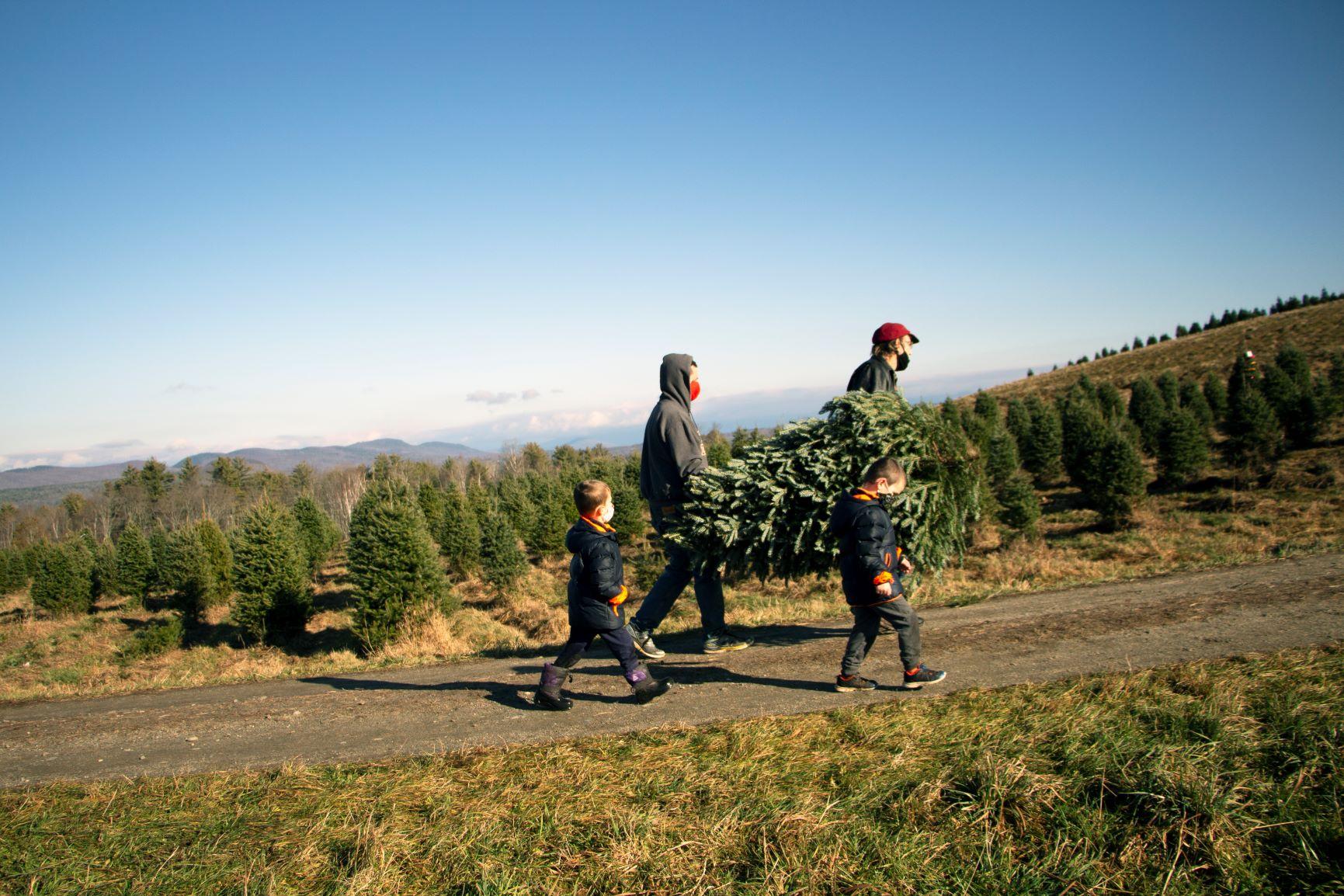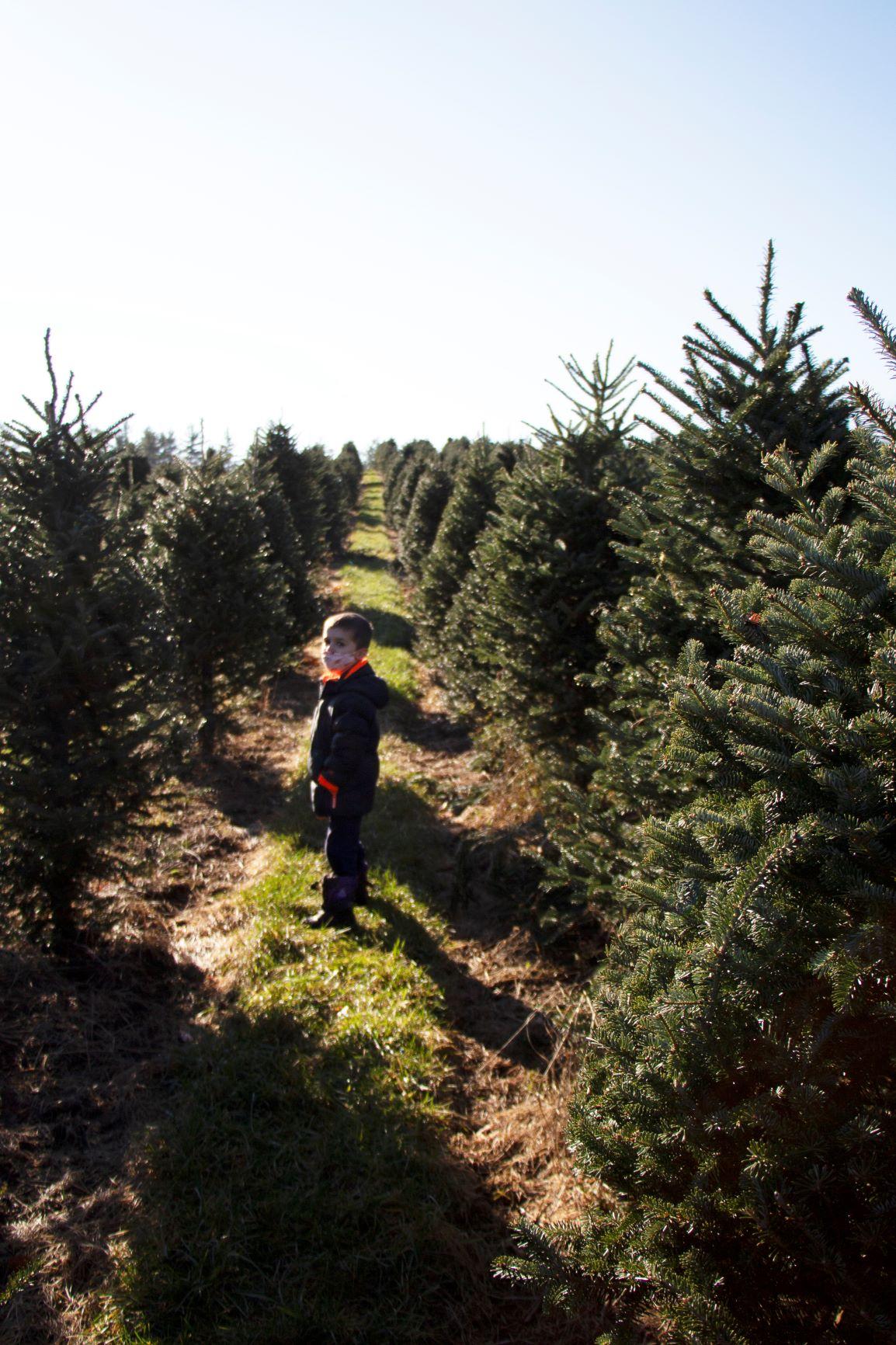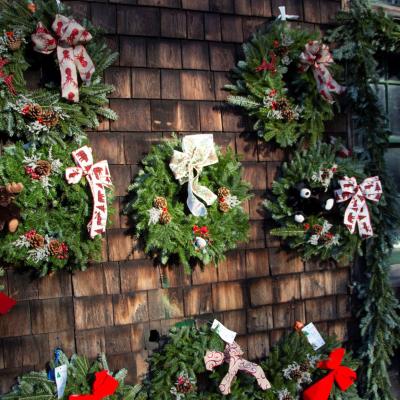- Tags:
- The Rocks

Jonah Berry, Evan Berry (foreground, left to right) and dad, Jake Berry (behind, left), help the twins' grandfather Chris Haigh bring a Christmas tree home from The Rocks’ Christmas tree farm in Bethlehem. (Photo: Anna Berry)
Everyone needs a sign of hope when winter days are “dark and drear” — especially this year. Did you know that the Fir tree has been just that for centuries?
After traveling to The Rocks’ Christmas tree farm last weekend to pick out a tree with my parents, I was happy to discover that even those who don’t celebrate Christmas (including me and my family) can revel in the message of the “tannenbaum.”
As we look toward a fresh new year, John Rutter’s translation of “O Tannenbaum,” written by Ernst Anschütz, reminds us that nature is always blooming:
O Tannenbaum, O Tannenbaum, How faithfully you blossom! Through summer’s heat and winter’s chill, Your leaves are green and blooming still. … O Tannenbaum, O Tannenbaum, With what delight I see you! When winter days are dark and drear, You bring us hope for all the year.
In fact, “O Tannenbaum,” was a folk song about evergreens long before it became associated with Christmas in the 19th century.
Conifers Significant Across Centuries
The tradition of decorating a tree at Christmas dates back to the 16th century, although the Christmas tree wasn’t introduced to the U.S. until the 1800s by German settlers.
And, conifers were meaningful to the people who lived on our land — the “people from the place of the white pines” — long before that.
Paul Pouliot, a leader of the Cowasuck Band of the Pennacook Abenaki People in New Hampshire, explained the meaning behind a “Cowass Honor Song” in the Indigenous 101 podcast series: “Cowass means ‘Place of the White Pines’ and we are the ‘People from the Place of the White Pines,’” Pouliot says. The song pays respect to the green, wooded lands of our region, a tradition that continues today.
Reverence for the pine family (pinaceae), including firs, cedars and spruces, crosses cultures, with a widespread belief that hanging evergreens, symbolizing life everlasting, and could ward off evil spirits.
“Working Forests” Part of Land Conservation and Management
Here in northern New England, Fir trees thrive in the cool, moist climate, according to the NH-VT Christmas Tree Association, and there are some 500 Christmas tree farms across our two states.
The Society for the Protection of New Hampshire Forests has a mission to protect the state’s most important landscapes while promoting the wise use of its renewable natural resources. So, when a 1,400-acre property in Bethlehem, “The Rocks,” was donated in 1978 with the requirement that there always be a crop in the field, Christmas trees were a natural choice.

At The Rocks’ Christmas tree farm this year, visitors can choose from Balsam, Fraser or Canaan Firs to cut their own trees, or purchase a fresh-cut tree or wreath. One important difference for 2020 is that reservations, and masks, are required.
Visiting The Rocks with my family felt like a small piece of our former lives restored. During a time when my children can’t see their grandparents indoors, they were all excited to share a new experience together that took place outside.
Heading off by the historic Carriage Barn decorated with handmade wreaths, we enjoyed views of the White Mountains and the smell of fir needles as we made the short walk through the neat rows of trees on a warm Sunday morning.

My 5-year-olds were even more exuberant about the final stage of the process — watching our Christmas tree make its way through a large baler before the trip home. They could have sat for hours watching the machinery.
Christmas trees are also something of wonder to my kids because we don’t observe the holiday in my Jewish household. But, we’ve loved celebrating with my parents over the last few years in the parlor of their 1890s farmhouse, where the “green leaves” of their Christmas tree will be a welcome reminder that there are holiday traditions we can still enjoy.
This year, I’ll remind my family that the menorah, a candelabra made up of “branches,” was used long ago in the wilderness when sources of light were scarce, literally and figuratively.
Wishing You Happier Days Ahead
Two weeks before winter solstice, I appreciate that the end of “O Tannenbaum” likens the fir tree to light in a time of darkness:
O Tannenbaum, O Tannenbaum, You bear a joyful message: That faith and hope shall ever bloom, To bring us light in winter’s gloom.
I hope you seek out something evergreen this holiday season — inside or outside — and find the light.
LEARN MORE:
- Find a real Christmas tree near you via the NH-VT Christmas Tree Association: nh-vtchristmastree.org
- Learn more about The Rocks: forestsociety.org/the-rocks
- Learn more about Christmas tree farms via the National Christmas Tree Association: realchristmastrees.org
- Listen to the Cowass Honor Song: https://indigenousnh.com/2018/11/20/indigenous-nh-101-cowass/
Anna Berry is the digital outreach manager for the Forest Society.
